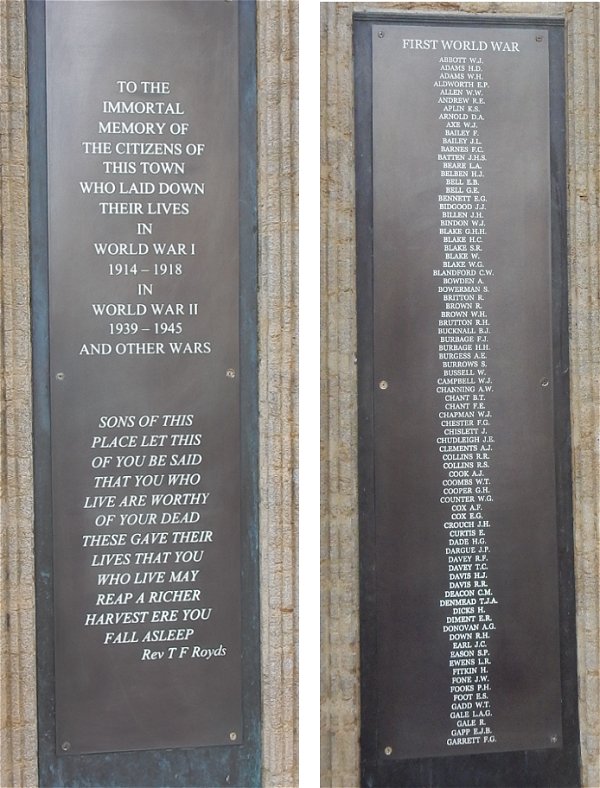war memorial - Borough
war memorial
The Borough
A memorial to honour Yeovil's war dead was first proposed at a meeting of the Borough Council in July 1917 by mayor Edmund Damon. After much debate over the style of the memorial, its location (originally favouring the Triangle), and so forth, the final memorial was erected in the Borough.
The 29 foot high memorial was designed by Charles Wilfred Childs and sculpted in Ham stone by Messrs Appleby & Childs at a total cost of £1,250 (about £52,000 at today's value). The style of the memorial was based on the 'Eleanor' crosses erected by King Edward I in memory of his wife, Eleanor of Castile, to mark the nightly resting places along the route taken when her body was transported to London in 1290. The original twelve crosses were lavishly decorated stone monuments of which three survive intact at Waltham Cross, Geddington and Hardingstone. Below is a comparison photograph of Yeovil's war memorial and the Eleanor cross at Waltham Cross in Hertfordshire.
 The
memorial was
unveiled by Col
Frank Davidson Urwick
DSO, president
of the Yeovil
branch of the
British Legion,
at a ceremony
which took place
at 6pm on
Thursday, 14
July 1921 and
The Western
Gazette reported
- "The Yeovil
Territorial
Company under
the command of
Captain J R
Ware, marched in
first and took
up a position,
and they were
soon followed by
a large
contingent of
ex-servicemen,
headed by the
Town Band, who
marched in from
Middle Street.
These veterans,
many of who were
wearing their
medals, kept the
ground - a
hollow square
before the flag
covered cross -
and with the
police, did much
towards
preserving the
quietude and
order before the
service. Then
came a pathetic
little
procession into
the square, a
large party of
children, many
of them tiny
tots, carrying
posies of
flowers, which
they were to
place later on
the base of the
Monument on
which was
engraved the
names of their
fathers. Just
after the town
clock struck the
hour the final
procession moved
through the
crowd. Headed by
the clergy and
ministers of all
denominations it
included the
Mayor, and
Aldermen and
Councillors of
Yeovil
Corporation.
‘The hymn
'Nearer My God
to Thee' was
sung and the
Mayor, Alderman
W. R. E.
Mitchelmore,
addressed the
crowd He said
that the
memorial was a
token of love,
respect and
gratitude for
the sacrifice
made by those
whose names were
inscribed upon
it and would be
a shrine here in
Yeovil for the
men whose graves
were scattered
far and wide. At
the call of the
Mayor,
Lieutenant
Colonel F. D. Urwick, DSO, who
had seen
distinguished
service with the
Somerset Light
Infantry in the
Middle East,
pulled a cord
and the flags
fell away. The
Vicar of Yeovil
then dedicated
the memorial, a
hymn and the
National Anthem
concluded the
ceremony."
The
memorial was
unveiled by Col
Frank Davidson Urwick
DSO, president
of the Yeovil
branch of the
British Legion,
at a ceremony
which took place
at 6pm on
Thursday, 14
July 1921 and
The Western
Gazette reported
- "The Yeovil
Territorial
Company under
the command of
Captain J R
Ware, marched in
first and took
up a position,
and they were
soon followed by
a large
contingent of
ex-servicemen,
headed by the
Town Band, who
marched in from
Middle Street.
These veterans,
many of who were
wearing their
medals, kept the
ground - a
hollow square
before the flag
covered cross -
and with the
police, did much
towards
preserving the
quietude and
order before the
service. Then
came a pathetic
little
procession into
the square, a
large party of
children, many
of them tiny
tots, carrying
posies of
flowers, which
they were to
place later on
the base of the
Monument on
which was
engraved the
names of their
fathers. Just
after the town
clock struck the
hour the final
procession moved
through the
crowd. Headed by
the clergy and
ministers of all
denominations it
included the
Mayor, and
Aldermen and
Councillors of
Yeovil
Corporation.
‘The hymn
'Nearer My God
to Thee' was
sung and the
Mayor, Alderman
W. R. E.
Mitchelmore,
addressed the
crowd He said
that the
memorial was a
token of love,
respect and
gratitude for
the sacrifice
made by those
whose names were
inscribed upon
it and would be
a shrine here in
Yeovil for the
men whose graves
were scattered
far and wide. At
the call of the
Mayor,
Lieutenant
Colonel F. D. Urwick, DSO, who
had seen
distinguished
service with the
Somerset Light
Infantry in the
Middle East,
pulled a cord
and the flags
fell away. The
Vicar of Yeovil
then dedicated
the memorial, a
hymn and the
National Anthem
concluded the
ceremony."
The requirements for adding a name to Yeovil's War Memorial was issued by the Town Council in 1919 (see Gallery). Sadly many names were, for whatever reason, not included.
Originally names were inscribed in the stonework of the Borough War Memorial but over the years, as new conflicts and new names were added, at least two sets of brass plaques were added. With regard to names of Yeovil's fallen of the Great War, until November 2018 there were 236 names on the Borough War Memorial and 15 on the Preston Plucknett War Memorial.
The 312 pages that make up 'The Fallen' on this website (my 2014-18 project for the A-to-Z) is now complete. I am proud that my research for this project discovered over sixty Yeovil men whose names were omitted from the Borough War Memorial and two from the Preston Plucknett War Memorial. I also discovered 46 errors on the most recent panels. Fifty-three names were added to a new set of plaques for the Borough War Memorial (bringing the total to 289 names), commissioned by the Town Council, that was re-dedicated in a ceremony on the centenary of Armistice Day, 11 November 2018.
There is still some discrepancy between the names on the War Memorials and the names included in 'The Fallen' on this website. The Town Council's working party (which included me) decided that any new names for the memorials should be men (or women, had there been any) born in the urban area of Yeovil town and died as a direct result of the conflict. I, on the other hand, decided that for 'The Fallen' I would also include those who came to live and work in Yeovil - not just the town, but in the wider Yeovil that includes Watercombe, Yeovil Marsh, Vagg, etc. I also include those who died from disease, accidents, etc. while on, or as a result of, their military service.
Each Yeovilian who fell in the Great War has a page on this website in their memory - click here.
gallery
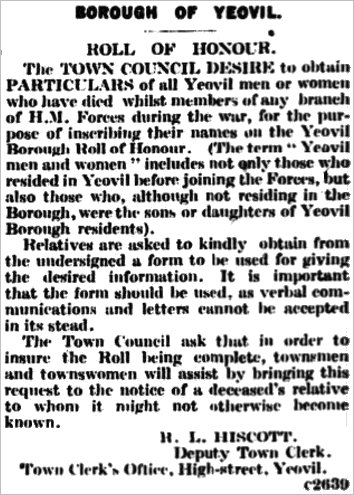
The requirements for adding a name to Yeovil's War memorial was issued by the Town Council. Sadly nearly 80 names were, for whatever reason, not included. Each has (or will have) a page on this website in their memory.
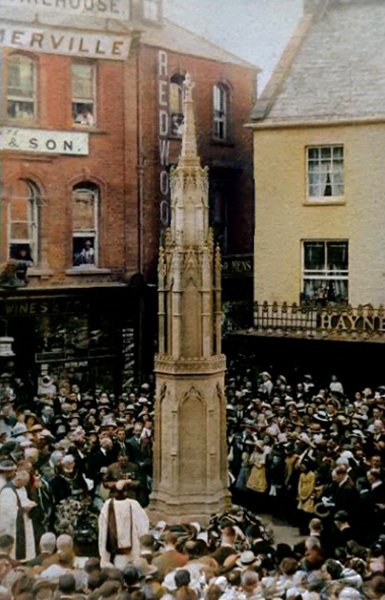
From my
collection.
This colourised photograph
features in my
book "A-Z
of Yeovil"
A postcard of the dedication of the War Memorial, 14 July 1921.
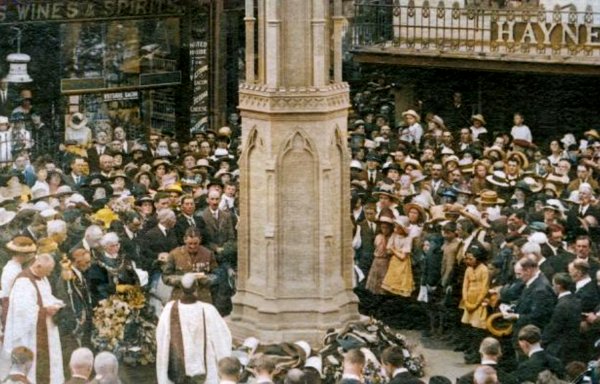
From my
collection
An enlargement of the previous postcard showing at lower left, from left to right, the Corporation Mace Bearer Henry Jesty, Mayor WRE Mitchelmore and Col Frank Davidson Urwick DSO.
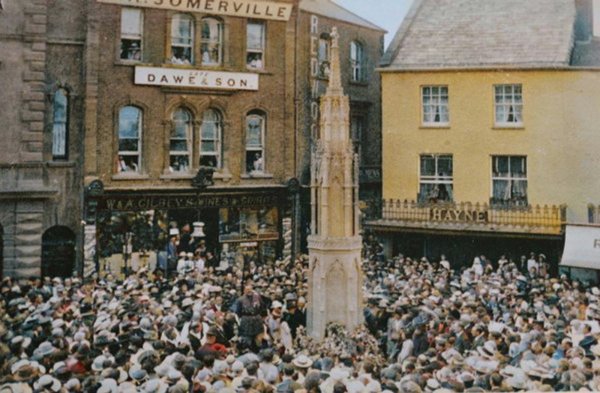
A colourised photograph of the crowd filling the Borough ...
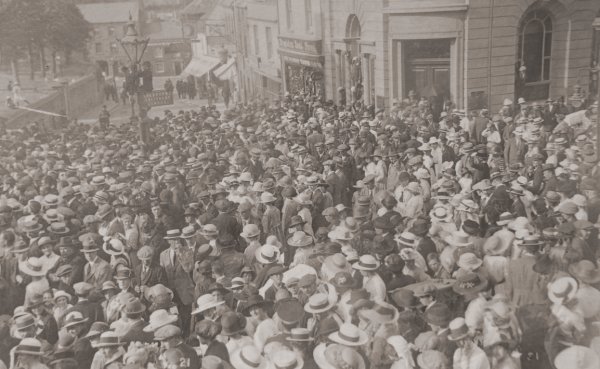
Courtesy of Jack
Sweet
... and spilled over into Silver Street and Middle Street.
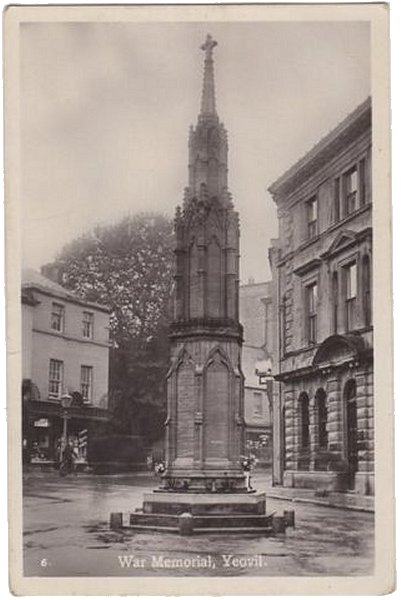
A postcard of
the Borough War
Memorial, dating
to the very
early 1920s
(King George
Street is yet to
be built).

From my
collection
This postcard from the late 1920s (King George Street has been built) shows the War Memorial looking west.
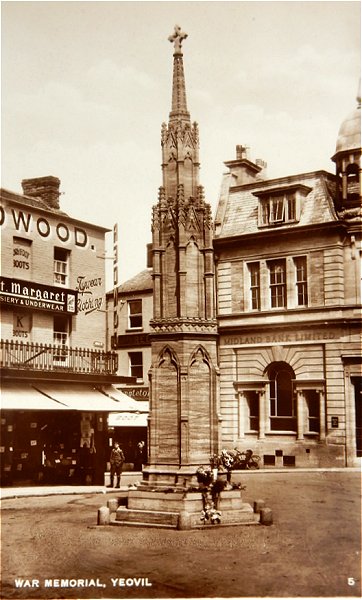
From my
collection
This postcard, again from the early 1920s, shows the War Memorial looking east.
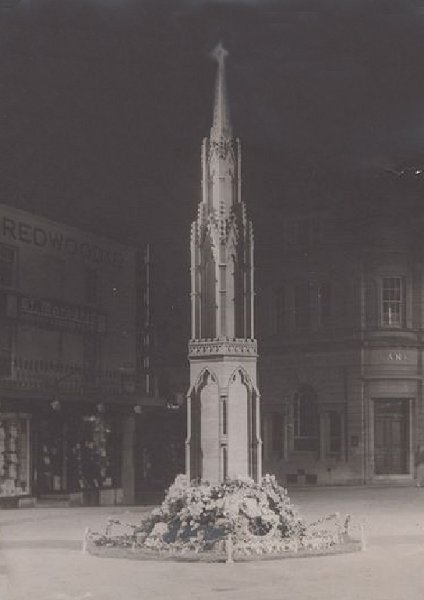
Courtesy of Rob
Baker
The War Memorial floodlit by Southern Electricity Board in 1932.
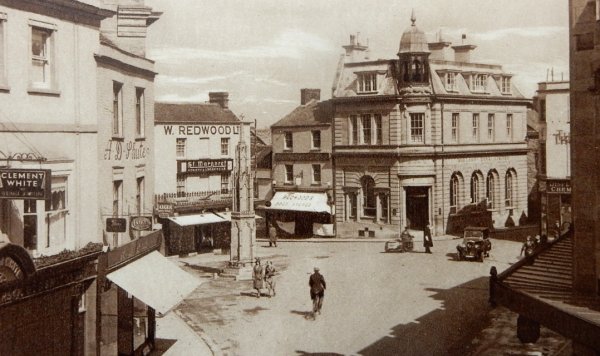
From my
collection
A postcard dated 1943of the Borough with the War Memorial at centre left.
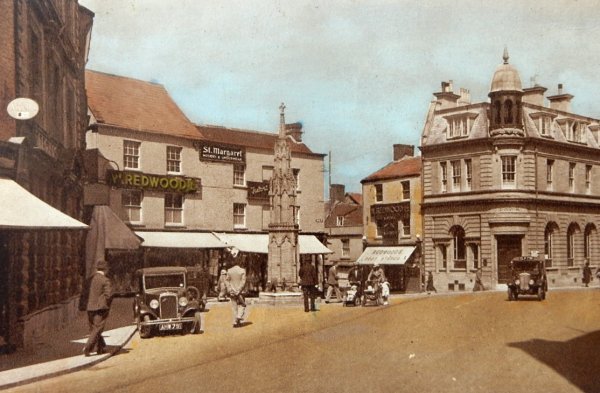
From my
collection.
This
image
features in my
book 'Yeovil
- The Postcard
Collection'.
Almost no change in 1959 when you could still drive around both sides of the memorial.
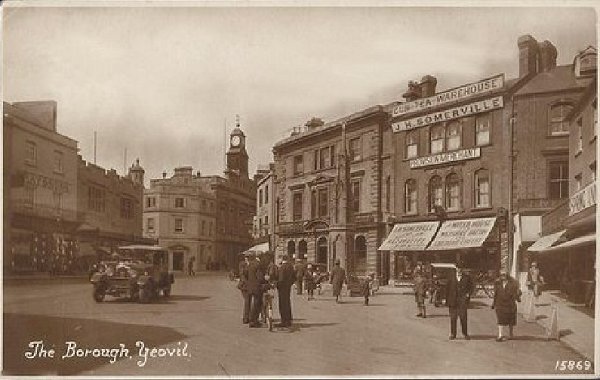
This postcard dates to 1929 and shows the Borough War Memorial just a few years after it was erected.
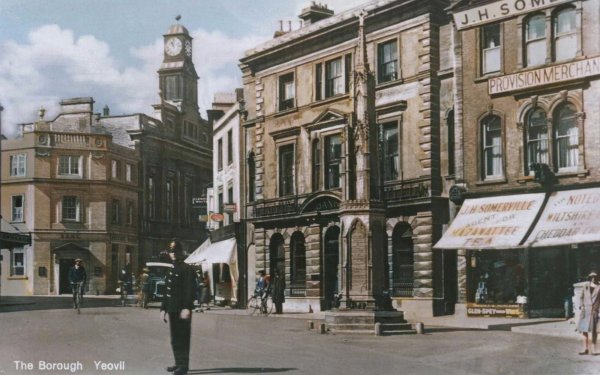
From my
collection.
This
colourised
postcard
features in my
book 'Yeovil
- The Postcard
Collection'.
A postcard of the War Memorial in the Borough, apparently guarded by a policemen. This card was sent in 1940 even though the photograph must have been taken before 1935 when the Town Hall, seen in the background, burnt down.
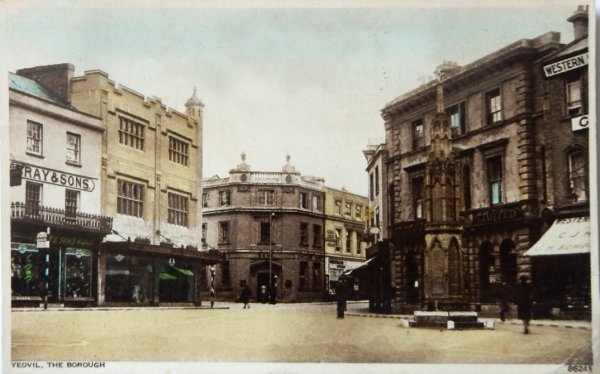
From my
collection
A photograph dating to after 1935, (the town hall has disappeared, being destroyed by fire). This photograph was used on postcards from at least 1940 until the late 1950s.
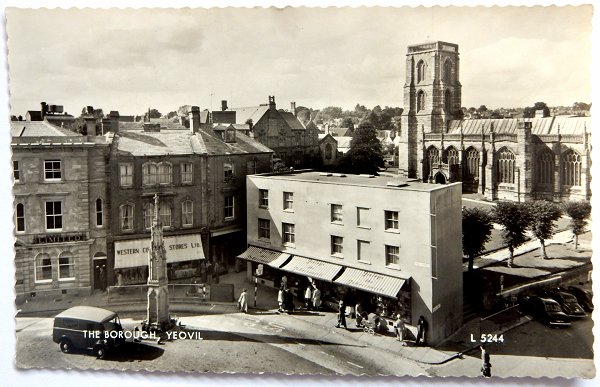
From my
collection
A postcard from the late-1950's (this one was posted in 1962) looking across the Borough towards St John's church. The white building at centre was at this time occupied by Finlay's the tobacconists and you could still drive either side of the War Memorial.
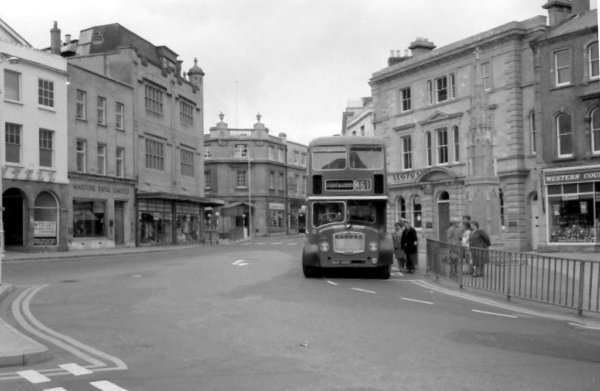
The Borough photographed in the mid-1960's. By this time you couldn't drive both sides of the War Memorial.

From my
collection.
This
image
features in my
book 'Yeovil
- The Postcard
Collection'.
A postcard of the Borough dating to the 1970s showing the War Memorial at lower right.
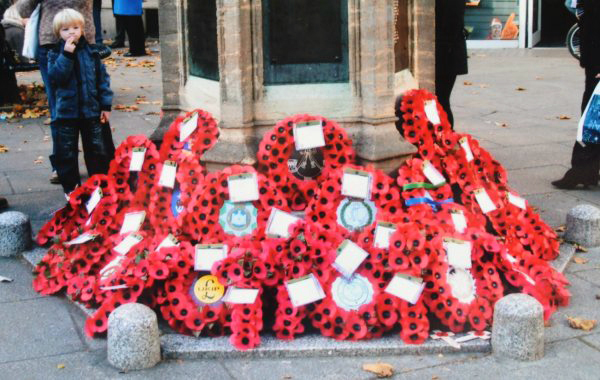
Courtesy of Jack
Sweet
Remembrance wreaths placed around the base of the War Memorial, November 2008.
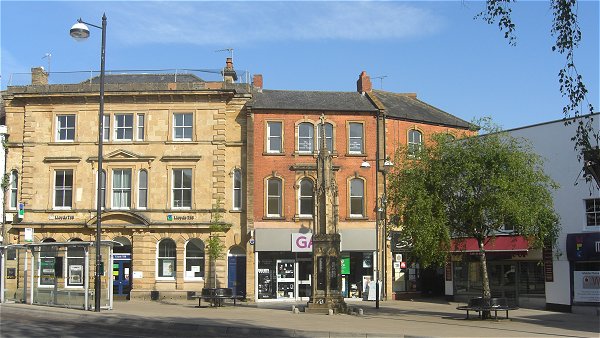
Looking across the Borough to the War Memorial. Photographed 2013.
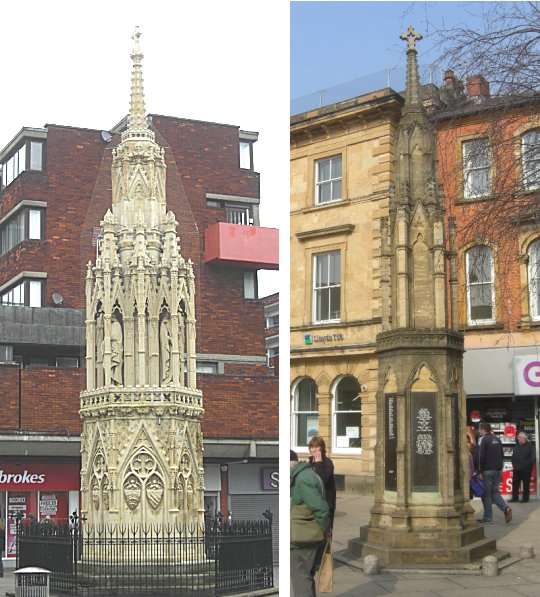
A comparison photograph of an original Eleanor cross, erected between 1291 and 1294 at Waltham Cross in Hertfordshire (just a mile from where I grew up) at left, and Yeovil's War Memorial in the Borough that owes its design to the original.
Installing The new plaques, 2018
The 312 pages that make up 'The Fallen' on this website (my 2014-18 project for Yeovil's Virtual Museum) was completed in August 2018. I am proud that my research for this project discovered over sixty Yeovil men whose names were omitted from the Borough War Memorial and two from the Preston Plucknett War Memorial. I also discovered forty-six errors on the most recent panels. Fifty-three names are being added, and corrections made to the errors, to a new set of plaques for the Borough War Memorial (bringing the total to 289 names), commissioned by the Town Council, to be unveiled on the Centenary of Armistice Day, 11 November 2018.
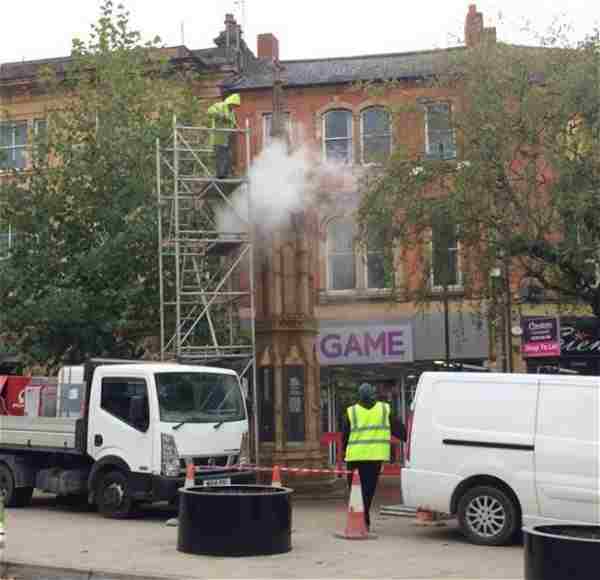
Courtesy of
Sharon Francis
Steam-cleaning the memorial on Tuesday 16 October 2018, in readiness for the installation of the new plaques.
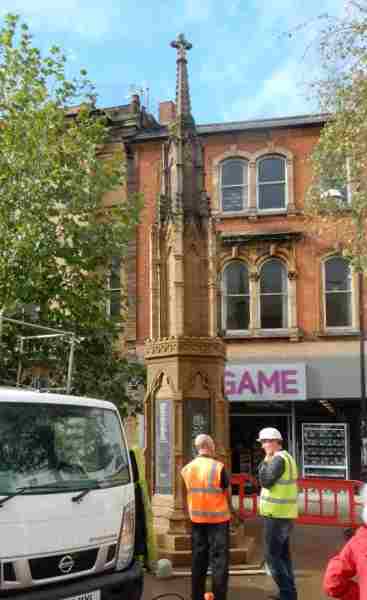
The newly-cleaned War Memorial.

... and from the other side.
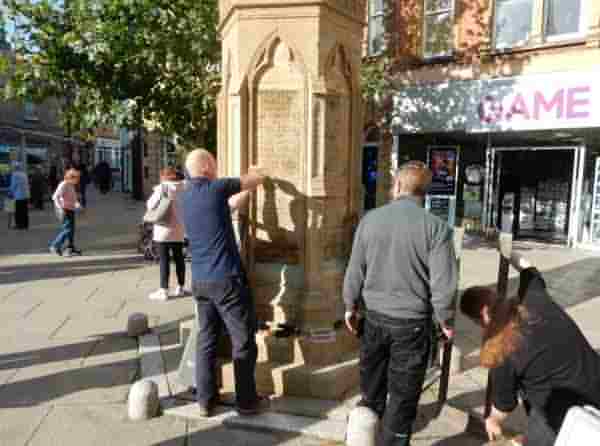
The replacement of the brass plaques on Thursday 18 October 2018. The operation begins by removing the old set of plaques, revealing the original names that had been carved into the stone of the memorial. The new plaques are the third set to have been added.

The new plaques are mounted in the original brass surrounds.
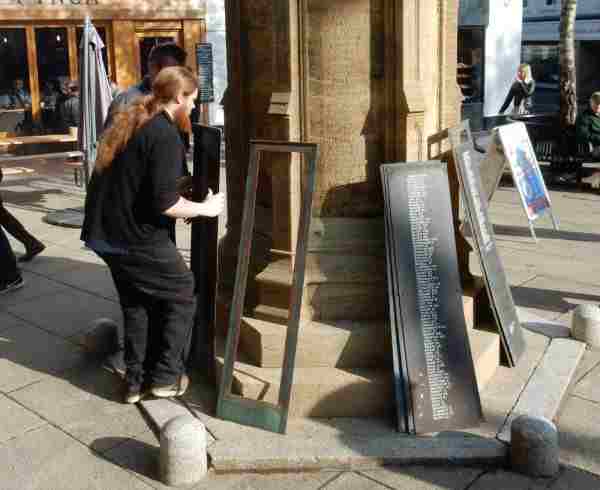
Old plaques stacked up, to be removed to the Town House for storage.
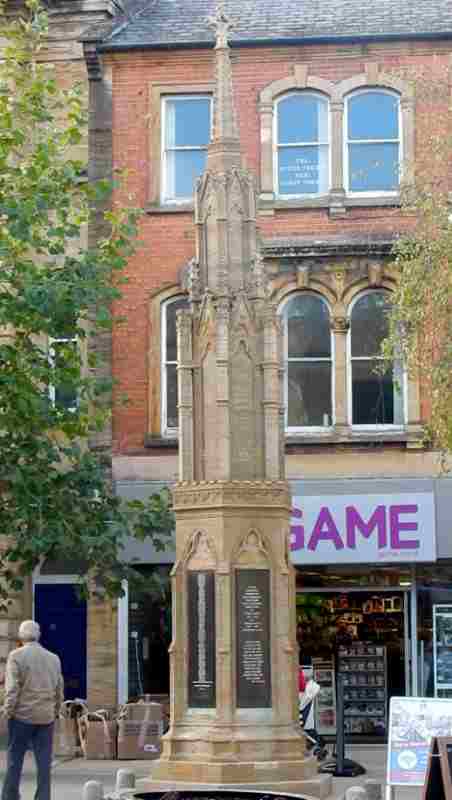
The newly-cleaned War memorial, complete with new plaques.
The new plaques, 2018
